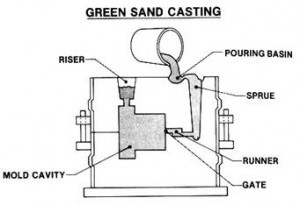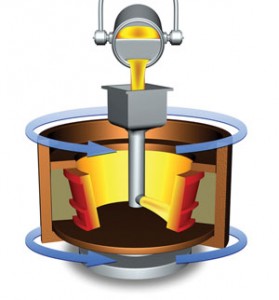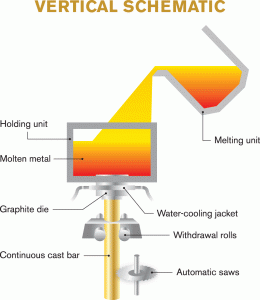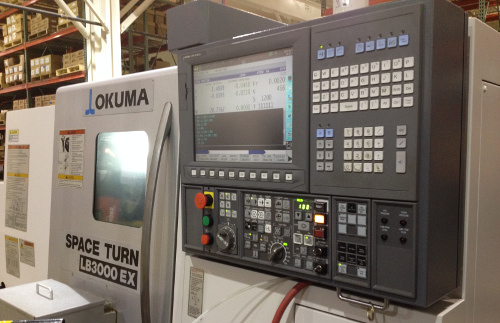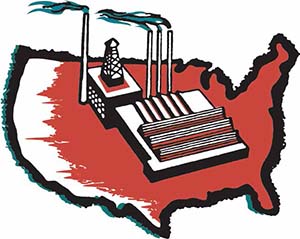Back to the Basics: Bronze Casting Process
It seems like almost every day we will get a phone call in our office from a confused customer concerning bronze casting processes. In 1911 we began as a bronze foundry and through the years as a casting manufacturer we have become the experts in the various bronze casting methods. Hopefully this article will help clear up some of the confusion and assist you in choosing the appropriate method for your application.
Let’s begin by describing the 3 most common types of casting processes. They are sand casting, centrifugal casting, and continuous casting. Each has their own unique benefits and limitations.
Sand Casting Process
Sand Casting is the oldest of the three. This process involves making a pattern in the shape of the desired part. The pattern is then placed in a box called a flask and packed with sand. A binding agent is added to the sand to help harden it. The mold is cured and the pattern is removed. The remaining hollow shaped area is where the molten bronze is poured in order to form into the desired shape. After the metal cools, the sand mold is removed and you are left with the sand casting. This casting can be sold as is, or additional finishing processes can follow.
The benefits of the sand casting method is the ability to for special shapes not possible via the other processes. The disadvantages of sand casting are generally associated with possible impurities in the casting caused by factors including the multiple step process and longer solidifying time needed.
Centrifugal Casting Process
The centrifugal casting process is typically used to cast cylindrical shaped castings. Centrifugal casting involves a cylindrical shaped mold. This mold is then rotated or spun about its axis at a predetermined speed. The castings wall thickness is controlled by the amount of material added during the pouring stage. Due to the nature of the centrifugal casting process the inner diameter of the part must always be round in shape. Most impurities in the metal generally have a lower density than the metal itself. During the casting process these impurities will collect in the inner diameter of the casting and can be removed during the casting process. This yields a casting with fewer impurities.
Centrifugal casting advantages include less impurities due to the removal during casting and lower costs associated with the ability to utilize similar molds for different sizes. The disadvantages are in the limitation on shape of casting and overall length limitations.
Continuous Casting Process
The process of continuous casting bronze is used to cast a continuous length of material. Molten bronze is cast through a mold from which it takes its profile. The length of the casting is not determined by the mold, but by a cut off saw. Continuous casting utilizes the force of gravity to help move the metal along. This casting operation begins high above ground and requires a lot of space. Continuous casting generally has less material lost than the other forms and a higher productivity rate. This process also generally yields a superior quality of casting. This is a result of the faster solidifying time and generally more uniform material properties. Disadvantages of this casting process are associated with the larger lot size needed to achieve the cost savings.
Where the confusion occurs
I would say around 95% of the confusion experienced by our customers is caused by outdated prints. When National Bronze Mfg. was founded in 1911, sand casting was the only way to cast bronze parts. So drawings from that time period will reference sand casting as the method of casting the bronze. This may be obviously spelled out in the print or may be signified by an ASTM or similar designation. Since 1911 other bronze casting methods have been developed and proven to be more effective for certain applications, these include both centrifugal and continuous casting. Unfortunately if a customer is working off a print prior to the development of these methods they may have difficulty finding the correct material. The reason being is that the material may not be manufactured via the specified process anymore, in lieu of more advanced and efficient processes. Unless the customer understands what all of the specific designations mean, it is difficult to understand why they cannot locate certain materials.
The best way to determine what casting method is best for your project is to consult with one of our experienced sale engineers. They will look at the every factor relating to your project and recommend casting methods specific for your individual needs. To contact one of our sales engineers follow the link below.

